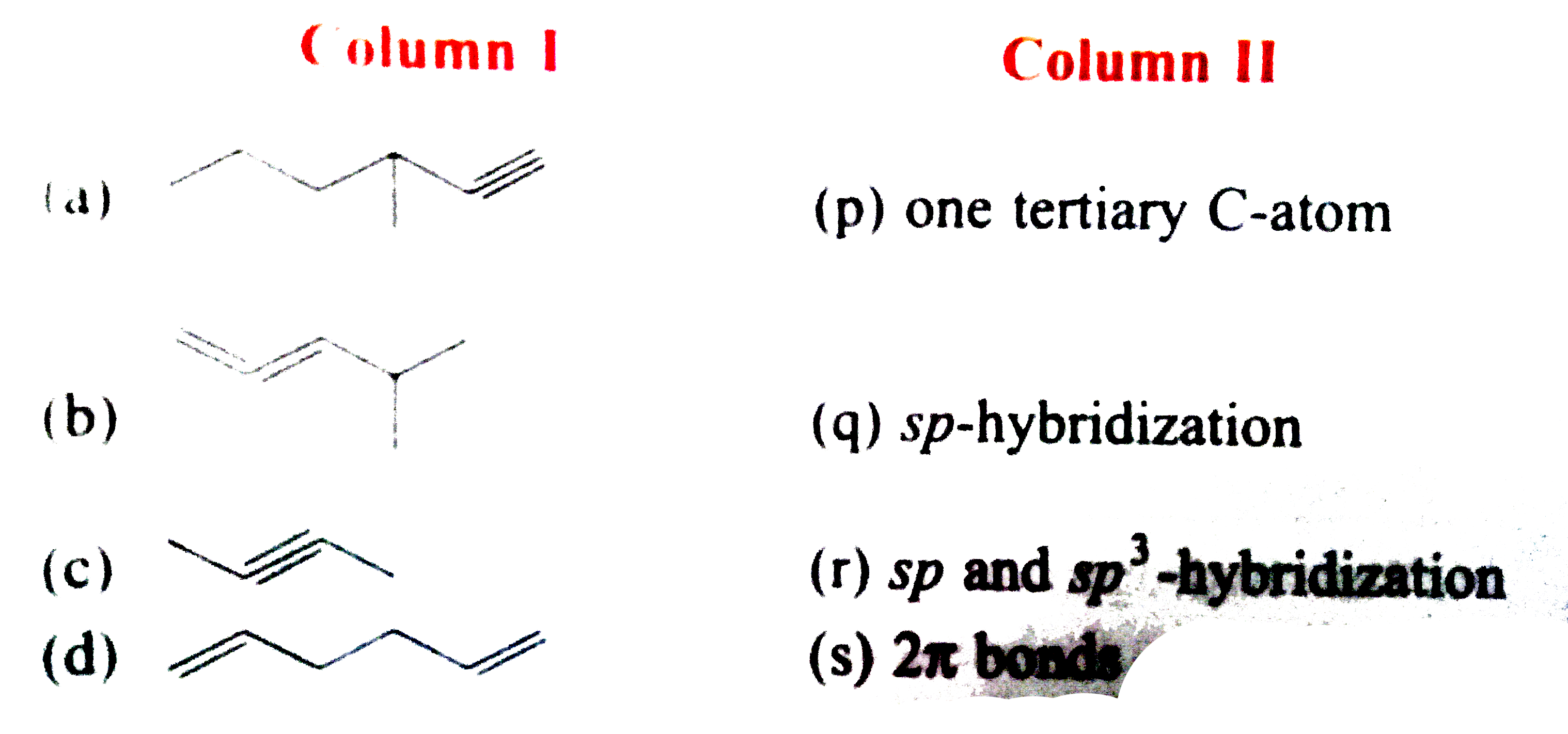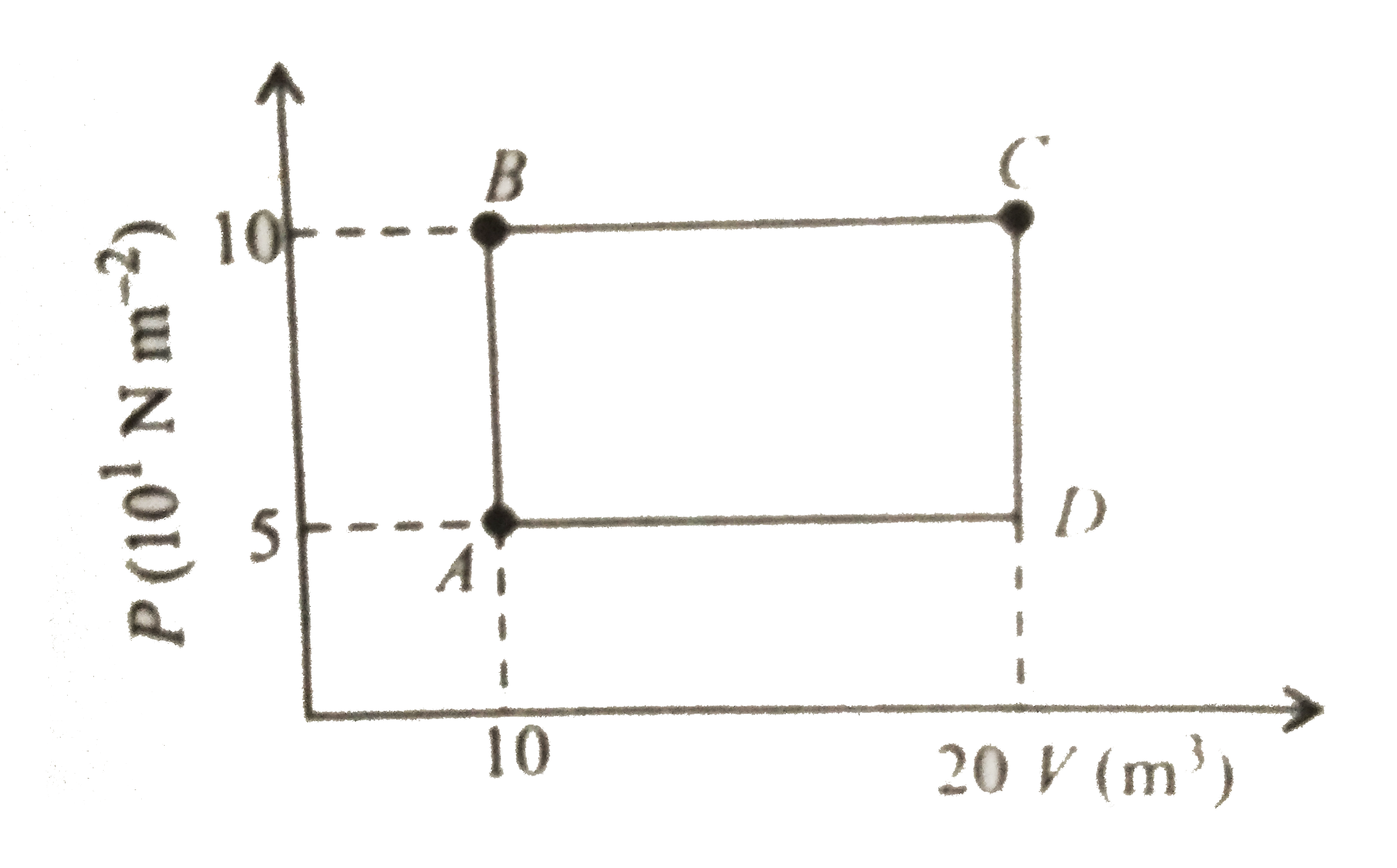A polar covalent bond is formed between the two elements of different electronegativies. The polarity of a bond depends on the electronegativity difference, the boiling atoms and also on the shape of the molecule.
A-B Let xA and xB are the electronegativites of bonding atoms A and B then, percentage ionic character of the bond can be calculated, as
% ionic character =21|xA−xB|+3.5|xA−xB|2 Dipole moment of the bond (μ) depends on the bond length and the polarity of the bond.
μ=q×d
Here, q = charge of the dipoles
d = bond length
It is observed that the dipole moment increases with increase in the inductive effect. Answer the following questions as indicated: Select code (a) if the statement is true and code (b) if the statement is false.
Dipole moment of aniline, trifluoromethylbenze and p-trifluoromethyl aniline lies in the following sequence:

The correct Answer is:b
Topper's Solved these Questions
- INTRODUCTION TO ORGANIC CHEMISTRY BOOK - OP TANDONCHAPTER - INTRODUCTION TO ORGANIC CHEMISTRY EXERCISE - Passage-2
5 Videos
- INTRODUCTION TO ORGANIC CHEMISTRY BOOK - OP TANDONCHAPTER - INTRODUCTION TO ORGANIC CHEMISTRY EXERCISE - Passage-3
4 Videos
- INTRODUCTION TO ORGANIC CHEMISTRY BOOK - OP TANDONCHAPTER - INTRODUCTION TO ORGANIC CHEMISTRY EXERCISE - MATRIX-MATCH TYPE
2 Videos
- CHEMISTRY IN EVERYDAY LIFEBOOK - OP TANDONCHAPTER - CHEMISTRY IN EVERYDAY LIFEEXERCISE - SINGLE INTEGER ANSWER TYPE QUESTIONS
5 Videos
- MISCELLANEOUS (TOPICS OF GENERAL INTEREST)BOOK - OP TANDONCHAPTER - MISCELLANEOUS (TOPICS OF GENERAL INTEREST)EXERCISE - SET-VI: Problems on graphical aptitude
53 Videos
Similar Questions
Geometry of organic compound is often described in terms of the valence shell electron pair repulsion theory. The VSEPR model rests on the premise that an electron pair, either bonded pair or an unshared pair, associated with a particular atom will be as far away from the atom's other electron pairs as possible. The tricoordinate carbon atoms of an alkene or carbonyl group also form bonds with angles near 120∘. In these compounds, unsaturated double bonds have two electron pairs-those of the sigma and pi bonds. Repulsion by these two pairs are some what greater than those between single bonds, so that deviation from exact 120∘ trigonal geometry is observed. Another factor which has important influence on shapes is non bonded repulsion between the atoms within the molecule. Such repulsion is also referred to as steric effects.

Select the correct sequence of bond angles indicated in the above molecules.
View SolutionDouble bond equivalents help in search for structure of a compound. It involves following steps:
Calculate the expected number of hydrogen atoms in the saturated structure.
(a) For Cn there would be: (2n+2) hydrogens if compound contains C,H,O only.
(b) For Cn,Nm there would be (2n+2+m) hydrogens.
Subtract the actual number of hydrogen and divide by 2. This gives the double bond equivalents.
Ring is considered to possess single DBE.
Double bond equivalent of C7H16O would be
View SolutionMatch the following:

View SolutionHow many of the following are preservatives ?
Sodium benzoate, sodium sulphite, sodium metasulphite, sodium sulphate, sodium thiosulphate, sodium acetate, sodium stearate.
View SolutionA sample of 2kg of helium (assumed ideal) is taken through the process ABC and another sample of 2kg of the same gas is taken through the process ADC. Then the temperature of the states A and B are (given R=8.3Jmol−1K−1)

View SolutionNature of bond can be predicted on the basis of electronativity of bonded atoms, greater difference in electronegativity (X), more will be the polarity of bond, and polar bond are easily broken in polar solvent like water. For hydroxy acids X0−XA difference predict the nature of oxide formed by the element A.
|X0−XA|>|X0−XH| then A−O−H show basic nature (NaOH)
|X0−XA|<|X0−XH| then A−O−H show acidic nature (H−O−CI)
With the help of EN values [ENA=1.8,ENB=2.6,ENC=1.6,END=2.8] answer the following questions for the compounds HAO,HBO,HCO,HDO.
Compounds whose aqueous solution is acidic and order of their acidic strength
View SolutionNature of bond can be predicted on the basis of electronativity of bonded atoms, greater difference in electronegativity (X), more will be the polarity of bond, and polar bond are easily broken in polar solvent like water. For hydroxy acids X0−XA difference predict the nature of oxide formed by the element A.
|X0−XA|>|X0−XH| then A−O−H show basic nature (NaOH)
|X0−XA|<|X0−XH| then A−O−H show acidic nature (H−O−CI)
With the help of EN values [ENA=1.8,ENB=2.6,ENC=1.6,END=2.8] answer the following questions for the compounds HAO,HBO,HCO,HDO.
Compounds whose aqueous solution is basic and order of their basic strength
View SolutionNature of bond can be predicted on the basis of electronativity of bonded atoms, greater difference in electronegativity (X), more will be the polarity of bond, and polar bond are easily broken in polar solvent like water. For hydroxy acids X0−XA difference predict the nature of oxide formed by the element A.
|X0−XA|>|X0−XH| then A−O−H show basic nature (NaOH)
|X0−XA|<|X0−XH| then A−O−H show acidic nature (H−O−CI)
With the help of EN values [ENA=1.8,ENB=2.6,ENC=1.6,END=2.8] answer the following questions for the compounds HAO,HBO,HCO,HDO.
Percentage ionic character of compound AB is
View SolutionPauling's equation for determining the electronegativity of an element, is ( X_(A), X_(B) are electronegativity value of elements A and B respectively, Delta represents the polarity of A-B bond.)
View Solution% Ionic character in the covalent bond A-B is: (Given that X_(A) = 2, X_(B) =3)
View SolutionThe percentage ionic character of a covalent bond (A-B) is about 50%, the electronegativity difference of the two elements will be :
View SolutionA polar covalent bond is formed between the two elements of different electronegativies. The polarity of a bond depends on the electronegativity difference, the boiling atoms and also on the shape of the molecule.
A-B Let xA and xB are the electronegativites of bonding atoms A and B then, percentage ionic character of the bond can be calculated, as
% ionic character =21|xA−xB|+3.5|xA−xB|2 Dipole moment of the bond (μ) depends on the bond length and the polarity of the bond.
μ=q×d
Here, q = charge of the dipoles
d = bond length
It is observed that the dipole moment increases with increase in the inductive effect. Answer the following questions as indicated: Select code (a) if the statement is true and code (b) if the statement is false.
The dipole moment of CH3−X bond lies in the following sequence:
CH3−I<CH3−Br<CH3−CI
True (a) False (b)
View SolutionA polar covalent bond is formed between the two elements of different electronegativies. The polarity of a bond depends on the electronegativity difference, the boiling atoms and also on the shape of the molecule. A-B Let x_(A) and x_(B) are the electronegativites of bonding atoms A and B then, percentage ionic character of the bond can be calculated, as % ionic character = 21|x_(A) -x_(B)| +3.5|x_(A)-x_(B)|^(2) Dipole moment of the bond (mu) depends on the bond length and the polarity of the bond. mu = q xx d Here, q = charge of the dipoles d = bond length It is observed that the dipole moment increases with increase in the inductive effect. Answer the following questions as indicated: Select code (a) if the statement is true and code (b) if the statement is false. Dipole moment of methanol is less than ethanol: True (a) False (b)
View SolutionA polar covalent bond is formed between the two elements of different electronegativies. The polarity of a bond depends on the electronegativity difference, the boiling atoms and also on the shape of the molecule.
A-B Let xA and xB are the electronegativites of bonding atoms A and B then, percentage ionic character of the bond can be calculated, as
% ionic character =21|xA−xB|+3.5|xA−xB|2 Dipole moment of the bond (μ) depends on the bond length and the polarity of the bond.
μ=q×d
Here, q = charge of the dipoles
d = bond length
It is observed that the dipole moment increases with increase in the inductive effect. Answer the following questions as indicated: Select code (a) if the statement is true and code (b) if the statement is false.
Dipole moment of C-Cl bond is greater than C-F bond:
True (a) False(b)
View SolutionA polar covalent bond is formed between the two elements of different electronegativies. The polarity of a bond depends on the electronegativity difference, the boiling atoms and also on the shape of the molecule. A-B Let x_(A) and x_(B) are the electronegativites of bonding atoms A and B then, percentage ionic character of the bond can be calculated, as % ionic character = 21|x_(A) -x_(B)| +3.5|x_(A)-x_(B)|^(2) Dipole moment of the bond (mu) depends on the bond length and the polarity of the bond. mu = q xx d Here, q = charge of the dipoles d = bond length It is observed that the dipole moment increases with increase in the inductive effect. Answer the following questions as indicated: Select code (a) if the statement is true and code (b) if the statement is false. Dipole moment of methyl alcohol is less than that of water: True (a) False (b)
View Solution
